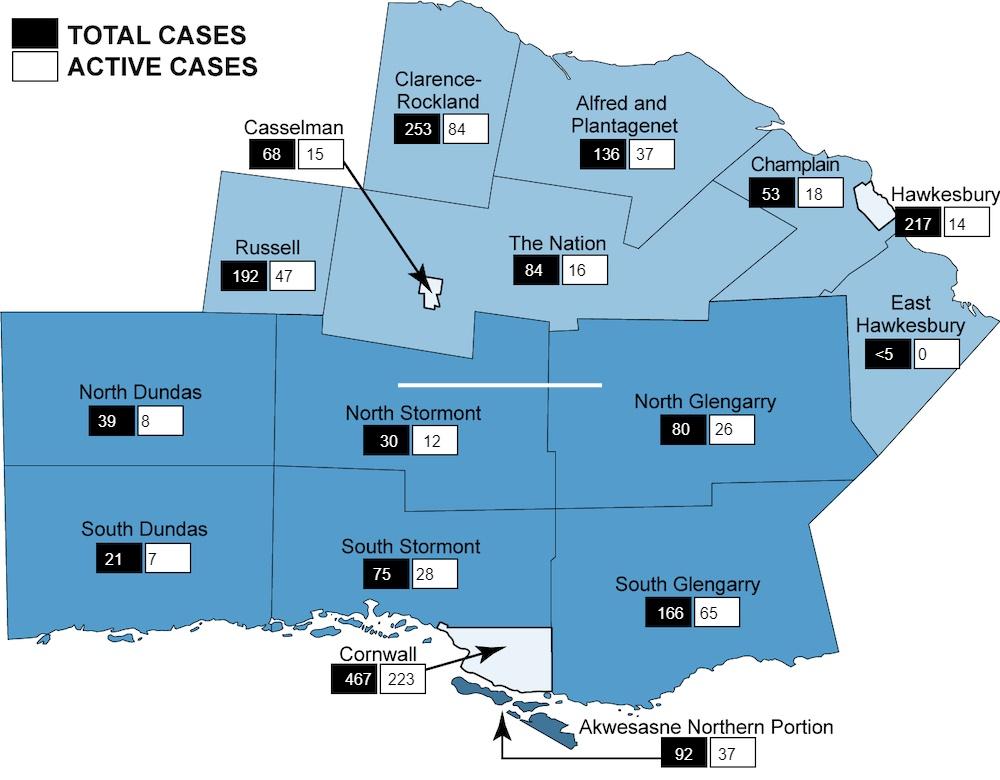In response to a doubling in COVID-19 cases over the past two weeks, the real and looming threat of the collapse of the province’s hospital system and alarming risks posed to long-term care homes due to high COVID-19 transmission rates, the Ontario government declared a provincial emergency on the afternoon of Tuesday, January 12.
Speaking at the legislature in Toronto, Premier Doug Ford said that Ontario is in “turbulent waters,” but is confident that the spirit of its citizens will get the province through this difficult time.
Recent modelling data shows that hospital intensive care units (ICU) across the province could be overwhelmed with COVID-19 cases by the first week of February.
“The system is on the brink of collapse,” said Ford.
Effective Thursday, January 14, 2021 at 12:01 a.m., the government is issuing a stay-at-home order requiring all Ontario residents to remain at home with exceptions for essential purposes, such as going to the grocery store or pharmacy, accessing health care services, for exercise or for essential work. This order and other new and existing public health restrictions are aimed at limiting people’s mobility and reducing the number of daily contacts with those outside an immediate household. In addition to limiting outings to essential trips, all businesses must ensure that any employee who can work from home, does work from home. Ford said that the state of emergency will be in place for at least 28 days.
Ford referred to data indicating that one-third of Ontarians were not following the COVID-19 restrictions that were already in place.
These new public health measures will help stop the spread of COVID-19 by reducing concerning levels of mobility as the province continues its vaccine rollout and ramps up to mass vaccination when the federal government is able to provide the necessary supply to do so.
Ford acknowledged that Ontarians are weary with the ongoing pandemic but emphasized that the action was needed.
“I know everyone is sick of COVID, and so am I,” said the Premier before defending the stay-at-home order.
“Everyone must stay home.”
Additional Public Health Restrictions
In response to the alarming and exceptional circumstances at hand, and to further interrupt the deadly trend of transmission in Ontario communities, hospitals, and long-term care homes, the government will enact the following additional public health measures:
- Outdoor organized public gatherings and social gatherings are further restricted to a limit of five people with limited exceptions. This is consistent with the rules during the lockdown during the first wave of COVID-19 in spring 2020 and will allow individuals and families to enjoy time outdoors safely.
- Individuals are required to wear a mask or face covering in the indoor areas of businesses or organizations that are open. Wearing a mask or face covering is now recommended outdoors when you cannot physically distance more than two metres.
- All non-essential retail stores, including hardware stores, alcohol retailers, and those offering curbside pickup or delivery, must open no earlier than 7 a.m. and close no later than 8 p.m. The restricted hours of operation do not apply to stores that primarily sell food, pharmacies, gas stations, convenience stores, and restaurants for takeout or delivery.
- Non-essential construction is further restricted, including below-grade construction, exempting survey.
These measures will come into effect between Tuesday January 12, 2021 and Thursday, January 14, 2021.
New Enforcement Measures
The province will provide authority to all enforcement and provincial offences officers, police officers, bylaw officers, and provincial workplace inspectors to issue tickets to individuals who do not comply with the stay-at-home-order, or those not wearing a mask or face covering indoors as well as retail operators and companies who do not enforce.
In addition, all enforcement personnel will have the authority to temporarily close a premise and disperse individuals who are in contravention of an order and will be able to disperse people who are gathering, regardless of whether a premise has been closed or remains open such as a park or house.
Schools and Child Care Centres
Based on the advice of the Chief Medical Officer of Health, schools in the following public health units (PHUs) will not return to in-person instruction until February 10, 2021:
- Windsor-Essex
- Peel Region
- Toronto
- York
- Hamilton
By January 20, 2021, the Chief Medical Officer of Health will advise the Ministry of Education on which public health units (PHUs) will be permitted to resume in-person instruction, based on the most up-to-date data and modelling. Before- and after-school programs can be offered when in-person instruction resumes. Schools in northern PHUs will continue to remain open.
To continue to keep students, staff, and communities safe, the following new health and safety measures will be put in place for in-person learning:
- Masking for Grade 1-3 and requirements for mask wearing outdoors.
- Enhanced screening protocols; and
- Expanded targeted testing.
Childcare centres for non-school aged children will remain open, and emergency childcare for school-aged children will end in approved PHU regions on January 22, 2021 as these elementary schools return to in-person learning. During this extended period of online learning, in areas where in-person elementary learning is suspended, emergency child care will continue for eligible families in regions subject to school closures.
Workplace Safety
The Ministry of Labour, Training and Skills Development is taking additional steps to protect workers with the launch of the “Stay Safe All Day” campaign, focusing workplace inspections in areas of high transmission, including break rooms, and providing new educational materials to employers to promote safe behaviour before, during and after work.
Ontario statistics
There were 2,903 new, active cases of COVID-19 across Ontario between January 11 and January 12. According to calculations based on statistics from the Ministry of Health, there were 30,141 active cases of COVID-19 across Ontario as of Tuesday.
There were 1,701 COVID-19 patients in hospital across Ontario as of January 12. Out of those patients, 385 were in intensive care, and 262 patients were on ventilators.
There had been 5,053 deaths due to COVID-19 across Ontario as of January 12.
Eastern Ontario Health Unit (EOHU)
The number of active cases of COVID-19 under EOHU jurisdiction decreased from 695 active cases on January 11 to 649 cases on January 12.
There were 17 COVID-19 patients from the EOHU’s territory in hospital as of January 12 and five of those patients were in intensive care.
The number of deaths resulting from COVID-19 across the area served by the EOHU was 38 as of January 12.
Long-term care outbreaks
As of Tuesday, January 12, COVID-19 outbreaks of two or more cases were in effect at the following long-term care and group living facilities under EOHU jurisdiction:
Villa St-Albert
Caressant Care Nursing Home in Bourget
Foyer St-Viateur Nursing Home in Limoges
Lancaster Long-Term Care
Riverview Manor in Cornwall
Heartwood Long-Term Care in Cornwall
Heritage Heights in Cornwall
Cornwall Community Hospital—Inpatient Mental Health Unit
Sandfield Place Long-Term Care and Retirement Home in Cornwall
Glen Stor Dun Lodge in Cornwall
TSIIonKwa NonhSoTe Long-Term Care in Akwesasne
Woodland Villa in Long Sault
COVID-19 cases under EOHU jurisdiction, January 12, 2021

Map: Eastern Ontario Health Unit


